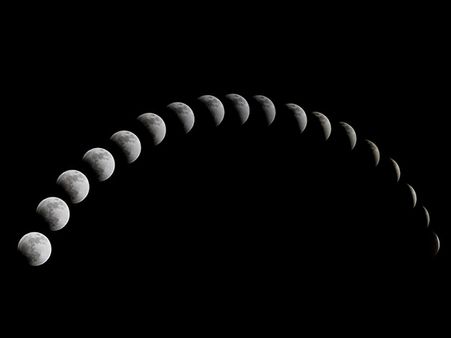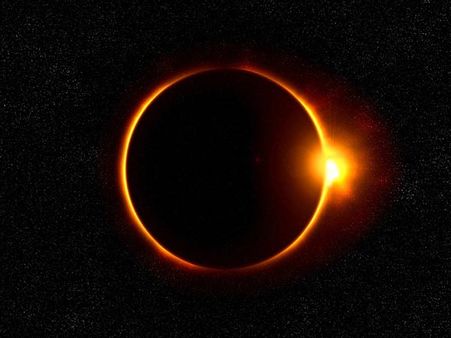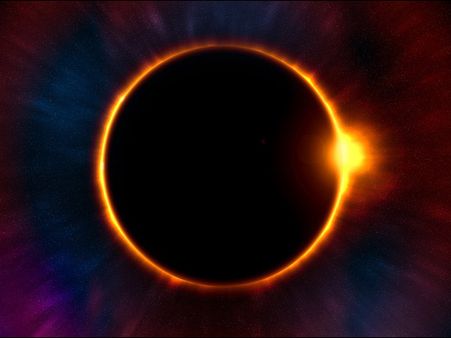Just In
- 1 hr ago

- 3 hrs ago

- 14 hrs ago

- 17 hrs ago

Don't Miss
- Sports
 PBKS vs MI IPL 2024: New PCA Stadium Pitch Report, Mullanpur Weather Forecast & Live Streaming Info
PBKS vs MI IPL 2024: New PCA Stadium Pitch Report, Mullanpur Weather Forecast & Live Streaming Info - Movies
 Bade Miyan Chote Miyan Box Office Day 8 Prediction: Akshay’s Film To Cross 50Cr Ahead Of LSD 2 Release
Bade Miyan Chote Miyan Box Office Day 8 Prediction: Akshay’s Film To Cross 50Cr Ahead Of LSD 2 Release - Finance
 Tata Steel, Adani Ent, Vedanta, NMDC, SAIL, Others: Near-Term Strategy For Investment In Metal Stocks
Tata Steel, Adani Ent, Vedanta, NMDC, SAIL, Others: Near-Term Strategy For Investment In Metal Stocks - News
 Delhi Capital's Captain Rishabh Pant Gathers Praise For His Wicketkeeping Skills, Stunning Catch
Delhi Capital's Captain Rishabh Pant Gathers Praise For His Wicketkeeping Skills, Stunning Catch - Education
 SCCL Recruitment 2024; Application process, Selection criteria and more
SCCL Recruitment 2024; Application process, Selection criteria and more - Automobiles
 Mahindra 3XO SUV Latest Teaser Reveals Connected Car Tech: All Details Here
Mahindra 3XO SUV Latest Teaser Reveals Connected Car Tech: All Details Here - Technology
 OnePlus 13 Early Leak Hints at a Revamped Camera Island, and Fast Charging to Remain at 100W
OnePlus 13 Early Leak Hints at a Revamped Camera Island, and Fast Charging to Remain at 100W - Travel
 From Coconut Breaking on Head to Men Dressing as Women: 12 Unique Indian Rituals Explored
From Coconut Breaking on Head to Men Dressing as Women: 12 Unique Indian Rituals Explored
Facts About Total Solar Eclipse That You Need To Know
There are certain things that happen on a total solar eclipse and understanding about it is important, as this is a rare phenomenon that occurs in years.

21st August, today, is the day the total solar eclipse is going to take place and this time, it can be mostly seen in the USA, which happens once in 38 years. Here are some interesting facts on the total solar eclipse that have been listed below.

So check out on the things that define the total solar eclipse and those who have the opportunity to experience it, make sure to witness the historic moment.

Fact #1: It Is The First Total Solar Eclipse
This will be the first total solar eclipse in the continental USA in 38 years. According to the reports, the last total solar eclipse had occurred on February 26, 1979. But unfortunately, not many people saw this total eclipse, as it clipped in just five states in the Northwest and the weather for the most part was bleak.

Fact #2: First Contact Is Going To Be In Oregon
If you want to be the first person to experience totality in the continental USA, be on the waterfront at Government Point, Oregon, at 10:15:56.5 a.m. PDT. There, the total phase lasts 1 minute, 58.5 seconds.

Fact #3: The Eclipse Totalities Are At Different Lengths
The reason the total phases of solar eclipses vary in time is because Earth is not always at the same distance from the Sun; and the Moon is also not always at the same distance from the Earth. According to scientists, the Earth-Sun distance varies by 3 percent and the Moon-Earth distance by 12 percent. As a result, the Moon's apparent diameter can range from 7 percent larger to 10 percent, which is smaller than that of the Sun.


Fact#4: Solar Eclipses Occur Between Saros Cycles
Solar eclipses occur between Saros cycles. Similar solar and lunar eclipses recur every 6,585.3 days (18 years, 11 days, 8 hours). Scientists call this length of time a Saros cycle. Two eclipses separated by one Saros cycle are similar. They occur at the same node, the Moon's distance from the Earth is nearly the same, and they happen at the same time of the year.

Fact #5: Everyone Will See At Least A Partial Eclipse
Everyone in the continental USA will see at least a partial eclipse. In fact, if you have clear skies on the eclipse day, the Moon will cover at least 48 percent of the Sun's surface. And that's from the northern tip of Maine.

Fact #6: It Is A Lineup Of The Sun, The Moon, And The Earth
A solar eclipse is defined as a lineup of the Sun, the Moon, and the Earth. While the Moon is seen directly between the Sun and Earth, it casts a shadow on the Earth. So if you're in the dark part of that shadow, which is known as the umbra, you'll see a total eclipse. And if you're in the light part, which is known as the penumbra, you'll see a partial eclipse.

Fact #7: The End Of The Eclipse For The USA
The end of the eclipse for the USA is not on land. The center line's last contact with the USA occurs at the Atlantic Ocean's edge, which is just southeast of Key Bay, South Carolina.
-
 healthWhat's The Secret To Living Till 100? Well, They Are Simple, Tasty, And Fulfilling!
healthWhat's The Secret To Living Till 100? Well, They Are Simple, Tasty, And Fulfilling! -
 astrologyNumerology And Its Influence: How Numbers Can Impact Major Life Decisions
astrologyNumerology And Its Influence: How Numbers Can Impact Major Life Decisions -
 insyncGuru Nanak Jayanti 2023 Bank Holiday: Banks Will Be Shut In These States Today, Check List!
insyncGuru Nanak Jayanti 2023 Bank Holiday: Banks Will Be Shut In These States Today, Check List! -
 yoga spiritualityThe Three Sisters Of Sita: Life History And Cause Of Death
yoga spiritualityThe Three Sisters Of Sita: Life History And Cause Of Death -
 faith mysticismSix Guides That Help You Reach Your Destination In Life
faith mysticismSix Guides That Help You Reach Your Destination In Life -
 faith mysticismParamahansa Yogananda: Priceless Quotes To Be Treasured And Remembered
faith mysticismParamahansa Yogananda: Priceless Quotes To Be Treasured And Remembered -
 faith mysticismHow The Pandava Prince Yudhishthira Was Humbled By A Small Mongoose
faith mysticismHow The Pandava Prince Yudhishthira Was Humbled By A Small Mongoose -
 faith mysticismHow To Perform Your Duties Regardless Of Results, Take A Cue From Mahabharata
faith mysticismHow To Perform Your Duties Regardless Of Results, Take A Cue From Mahabharata -
 lifeHow To Achieve Work Life Balance: 21 Tips That Will Come Handy
lifeHow To Achieve Work Life Balance: 21 Tips That Will Come Handy -
 wellnessYou Might Live Longer If You Have A Sense Of Purpose, Study
wellnessYou Might Live Longer If You Have A Sense Of Purpose, Study -
 beautyIs Life Really Easier For Attractive People?
beautyIs Life Really Easier For Attractive People? -
 wellnessEvery Seven Years Comes With A New Life Challenge: What Happens To Us During These Phases?
wellnessEvery Seven Years Comes With A New Life Challenge: What Happens To Us During These Phases?


 Click it and Unblock the Notifications
Click it and Unblock the Notifications



